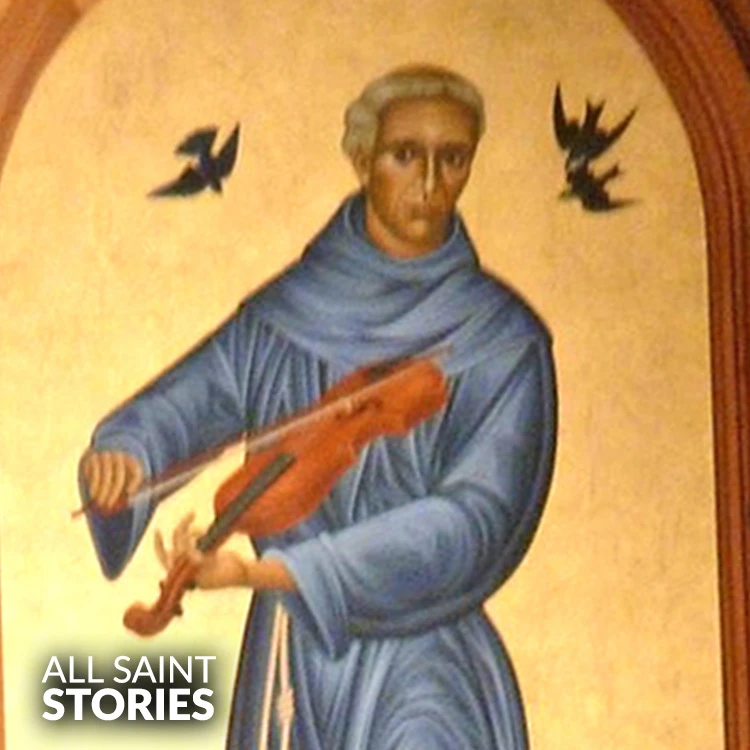O God, by whose gift Saint Francis Solano was inflamed with seraphic love and a zeal for souls, grant, we pray, that by imitating his virtues and merits, we too may walk faithfully in the path of your Gospel. Through Christ our Lord. Amen.
ST. FRANCIS SOLANO
ST. FRANCIS SOLANO

St. Francis Solano was a Spanish Franciscan missionary known for his evangelization in South America, particularly in Peru, Argentina, and Paraguay. Celebrated for his compassion, miracles, and musical talents, he became beloved by indigenous people and colonists alike.
Francisco Sánchez Solano was born on March 10, 1549, in Montilla, Spain, into a devout Catholic family. From an early age, he showed signs of deep spirituality and was educated by Jesuit priests. At age 20, he entered the Franciscan Order at St. Lawrence Friary in Montilla, adopting a life of strict asceticism, prayer, and devotion. Despite health setbacks, his spiritual growth was profound, and he became known for his intense piety.
In 1589, Francis was sent as a missionary to the New World. He first arrived in Panama and later traveled through Peru. During a shipwreck on this journey, while others fled the vessel, Solano chose to stay with the enslaved Africans on board, offering them comfort and hope until they were rescued. This act highlighted his commitment to the most vulnerable and marked the beginning of a transformative missionary journey.
Over the next two decades, he traveled widely across South America, particularly in modern-day Argentina, Bolivia, and Paraguay. He was a gifted linguist who learned several indigenous languages, allowing him to communicate the Gospel directly. Additionally, he used his musical talent—especially playing the violin—as a bridge between cultures, often drawing crowds who were moved by his music and message.
Francis Solano was also a fierce preacher against injustice. In Lima, Peru, he publicly condemned the exploitation and corruption among Spanish colonists. His preaching was not only powerful but transformative, drawing large crowds and leaving lasting impressions. His prophetic insight became legendary; in Trujillo, he foretold a future calamity that indeed occurred with an earthquake years later.
He died in Lima on July 14, 1610, and his last words were, “Glory be to God.” His sanctity and miracles quickly gained recognition. He was beatified in 1675 by Pope Clement X and canonized in 1726 by Pope Benedict XIII. Today, he is the patron saint of Argentina, Bolivia, Chile, Paraguay, and Peru, as well as Montilla, his birthplace. He is also invoked against earthquakes due to his prophetic warnings and intercessory power.
His legacy includes the Mission San Francisco Solano in California, named after him in 1823. In Humahuaca, Argentina, a life-sized mechanical figure of the saint appears daily at noon to bless visitors—an enduring symbol of his influence and devotion.
Video Not Found
The information on this website is compiled from various trusted sources. While we aim for accuracy, some details may be incomplete or contain discrepancies.
If you notice any errors or have additional information about this saint, please use the form on the left to share your suggestions. Your input helps us improve and maintain reliable content for everyone.
All submissions are reviewed carefully, and your personal details will remain confidential. Thank you for contributing to the accuracy and value of this resource.
Credits & Acknowledgments
- Anudina Visudhar (Malayalam) – Life of Saints for Everyday
by Msgr. Thomas Moothedan, M.A., D.D. - Saint Companions for Each Day
by A. J. M. Mausolfe & J. K. Mausolfe - US Catholic (Faith in Real Life) – Informational articles
- Wikipedia – General reference content and images
- Anastpaul.com – Saint images and reflections
- Pravachaka Sabdam (Malayalam) – Saint-related content and insights
We sincerely thank these authors and platforms for their valuable contributions. If we have unintentionally missed any attribution, please notify us, and we will make the correction promptly.
If you have any suggestion about ST. FRANCIS SOLANO
Your suggestion will help improve the information about this saint. Your details will not be disclosed anywhere.
© 2025 Copyright @ www.allsaintstories.com


 English
English
 Italian
Italian
 French
French
 Spanish
Spanish
 Malayalam
Malayalam
 Russian
Russian
 Korean
Korean
 Sinhala
Sinhala
 Japanese
Japanese
 Arabic
Arabic
 Portuguese
Portuguese
 Bantu
Bantu
 Greek
Greek
 German
German
 Dutch
Dutch
 Filipino
Filipino